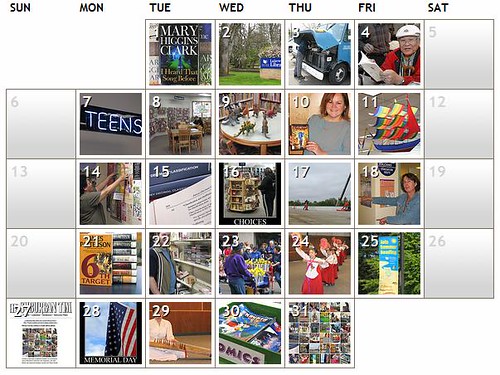Ever since Library Journal began publishing an annual list of Movers and Shakers, it’s been a joy learning about the rock stars of the library world. Most of them have made huge contributions to the profession and — perhaps more significantly — influenced how the general public perceives libraries. All of them are achievers.
 This year’s honorees have just been announced and they include David Lee King and Tim Spalding* — two people I’ve come to admire over the last year or more.** Congratulations David, Tim, and the rest of this year’s class. Considering that past winners include Helene Blowers, Meredith Farkas, Michael Stephens, Jessamyn West, etc., you’re in excellent company.
This year’s honorees have just been announced and they include David Lee King and Tim Spalding* — two people I’ve come to admire over the last year or more.** Congratulations David, Tim, and the rest of this year’s class. Considering that past winners include Helene Blowers, Meredith Farkas, Michael Stephens, Jessamyn West, etc., you’re in excellent company.
BTW: I’ve looked over the list but haven’t finished reading all the stories yet. The Library Journal site has the authoritative list, of course, but Jessamyn West’s annotated list is much easier to use: It includes real names!
—
* That’s Tim in the bottom right corner of the cover.
** On a personal note, I’ve been proud to know several of the movers and shakers from previous lists. They have each showed me nothing but friendliness, cooperation and service — just as they exemplified resourcefulness and innovation in their work. It’s no wonder they succeed.



 Posted by Steve Campion
Posted by Steve Campion 
 Is your library interacting with Gen Y adults? If not, why not? A
Is your library interacting with Gen Y adults? If not, why not? A  Expressing the bad isn’t always easy, though. She wrote that “failure isn’t sexy. Disclosing problems isn’t good for your brand.” How true! Transparent libraries are still rare. If you speak on behalf of an organization, you have to watch your tongue. Even if you speak independently, you often feel obligated to err on the side of caution.
Expressing the bad isn’t always easy, though. She wrote that “failure isn’t sexy. Disclosing problems isn’t good for your brand.” How true! Transparent libraries are still rare. If you speak on behalf of an organization, you have to watch your tongue. Even if you speak independently, you often feel obligated to err on the side of caution.






 Why call it “Library Stream”? It has to do with the flow of ideas. I suppose there’s a kinship to Flickr’s “photostream” and technology’s “streaming” audio & video, too. But there’s one more thought the “Library Stream” name conjures up for me. It’s the idea that change has become so common in the modern library that — like a stream — you’ll never set foot in the same library twice.
Why call it “Library Stream”? It has to do with the flow of ideas. I suppose there’s a kinship to Flickr’s “photostream” and technology’s “streaming” audio & video, too. But there’s one more thought the “Library Stream” name conjures up for me. It’s the idea that change has become so common in the modern library that — like a stream — you’ll never set foot in the same library twice.




